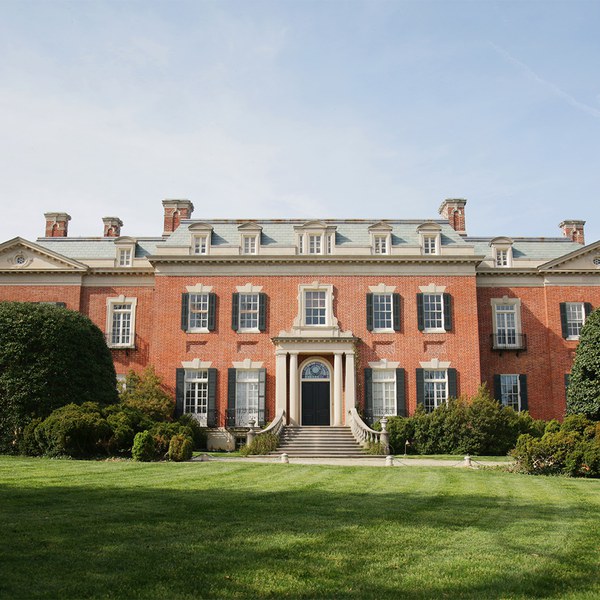For Immediate Release
July 18, 2019
Media Contact:
Erica Bogese
Communications Manager
(202) 749-8978
bogesee@doaks.org
Greenhouse Project to Enhance Environmental Sustainability & Increase Access at Dumbarton Oaks
WASHINGTON – Dumbarton Oaks announces a campus improvement project that will enhance sustainability, K-12 educational activities, and support of the arts and humanities at Dumbarton Oaks. The proposed Greenhouse Project will comprise two phases: first the construction of an energy-efficient greenhouse, followed by the renovation of the historic greenhouse, designed by Lawrence Grant White for McKim, Mead, & White Architects in 1925. Selldorf Architects has been selected to lead the design of both buildings in close collaboration with landscape architects Reed Hilderbrand. Selldorf Architects is well known for their work on cultural projects including the Frick Collection and the Neue Galerie in New York amongst others. Reed Hilderbrand has worked on other significant historic gardens and landscapes including Mount Auburn Cemetery in Cambridge, Massachusetts and The Blue Garden in Newport, Rhode Island.
Our greenhouse operations are fundamental to the stewardship of our historic garden, perhaps the best-preserved landscape by renowned designer Beatrix Farrand. The new greenhouse will benefit from solar panels, improved irrigation, and state-of-the-art climate control, saving energy and reducing our ecological footprint. Additionally, this greenhouse will have a greater capacity for plant care and propagation. The existing greenhouse will be renovated to accommodate our active educational, scholarly, and arts programming while maintaining the aesthetic character of the original design.
Over the past five years, Dumbarton Oaks has welcomed local students to the museum and garden, connecting them to the organization’s art and history. This renovation will allow us to serve more K-12 school groups and provide a space for immersive learning activities inspired by our collections. The project thus fits organically into our three-year plan to increase access to our collections and resources.
Dumbarton Oaks has also increased its support for artists. Our Early-Career Musician Residency, inaugurated in 2014, provides time and resources to promising young composers and musicians and includes occasional new commissions. The Greenhouse renovation will allow us to expand the program by providing a studio for a future artist in residence. Finally, the renovated building will furnish space for collaborative projects in digital humanities, enlarging the reach of the scholarship generated through our collections and research institute.
###
About Dumbarton Oaks:
Dumbarton Oaks is a Harvard research institute, library, museum, and historic garden in Washington, DC. The institution emerged thanks to the imagination and legacy of Robert and Mildred Woods Bliss, collectors of art and patrons of the humanities. The museum houses their world-class collections of Byzantine and Pre-Columbian art. A third collection of a different sort exists in the historic garden, which Mildred Bliss created in partnership with renowned landscape designer Beatrix Farrand. The garden is perhaps the last remaining landscape in North America that hews closely to the original Farrand design; it was voted by National Geographic one of the ten best gardens in the world. Buildings of architectural importance on the Dumbarton Oaks campus are the museum’s Pre-Columbian Pavilion, designed by Philip Johnson and completed in 1963, and the research Library designed by Venturi, Scott Brown and Associates and completed in 2005. Since 1940, when the Blisses gifted the estate and collections to Harvard University, Dumbarton Oaks has supported the advance of knowledge in the three areas of Byzantine, Pre-Columbian, and Garden and Landscape Studies through a fellowship program and other awards; scholarly conferences; publications; and digital initiatives. In recent years, Dumbarton Oaks has extended its service to the community by developing collection-based educational programs for DC students. Simultaneously, it has also strengthened its profile in the arts. Learn more at www.doaks.org.
About Selldorf Architects:
Founded in New York in 1988 by Annabelle Selldorf, Selldorf Architects creates public and private spaces that manifest a clear and modern sensibility of enduring impact. The firm has particular expertise creating architecture that enhances the experience of art and education, having worked internationally on numerous museums, galleries, art foundations, and other cultural projects. Projects include the renovation and expansion of the Frick Collection in New York City, the Neue Galerie New York, Brown University Hay Library, the Clark Art Institute, Williamstown, MA; LUMA Arles, a new center for contemporary art in Southern France; and galleries for David Zwirner and Hauser & Wirth, amongst others. The expansion of the Museum of Contemporary Art San Diego is currently under construction and the new Rubell Museum in Miami will open in December of this year. Additionally, Selldorf Architects has designed the award-winning Sunset Park Materials Recovery Facility on the Brooklyn waterfront.
About Reed Hilderbrand Landscape Architecture:
Reed Hilderbrand practices landscape architecture as an art of purposeful transformation. Active since the mid-1990s, Reed Hilderbrand has created significant works for The Clark Art Institute, New Orleans Museum of Art, and Phoenix Museum of Art as well as projects on the campuses of Duke University, MIT, Bennington College, and Harvard Business School. Their work connects daily life to the visible phenomena and the invisible systems of nature, in pursuit of beauty and clarity, ecological health, public engagement and resilience. Transforming the land shapes lives and influences communities.

